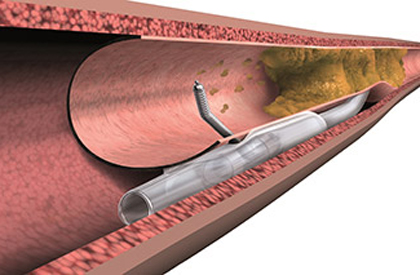Studies and registries assessing sex differences in chronic total occlusions (CTO) are limited and women are under-represented, accounting for only 14%-21% of included patients. Even though success rate is comparable between sexes, several studies have shown higher complications rate among women.

The aim of this study was to identify sex related baseline and procedural differences, as well as intervention success and inhospital clinical outcomes after CTO PCI. It was based on a prospective, multicenter European study on CTO.
Primary end point was procedural success rate between cohorts (men vs women) defined as TIMI=3 and residual stenosis lower than 20%. Secondary end points were inhospital major adverse cardiovascular and cerebrovascular events (MACCEs) and procedural complications.
The study looked at 35449 patients enrolled in the registry, 15.2% of which were women. As regards baseline characteristics, women were older (P<0.001), has more hypertension (P<0.001) and diabetes (P<0.001). Women more often presented angina, and FC III or IV (P<0.001). However, showed lower prevalence of prior AMI, prior PCI or CABG and lower three- vessel disease vs men. The right coronary artery was most frequently affected with no difference between sexes. Nevertheless, women presented lower J-CTO score (2.02 ± 1.26 vs. 2.23 ± 1.27, p < 0.001).
The anterograde strategy was the preferred one for women (P=0.002), while the retrograde was more used in men (P<0.001). The amount of contrast used (P<0.001), fluoroscopy time (P< 0.001) and total procedural time (P<0.001) were significantly lower in women vs. men.
As regards primary end point, CTO recanalization rate was higher in women (87.3% vs. 86.3%, p = 0.046). When it came to the secondary end point, there were no differences in terms of inhospital MACCEs, but complications such as coronary perforation (3.7% vs.2.8%, p < 0.001), vascular complications (1.0% vs. 0.6%, p < 0.001) and major bleeding (0.4% vs. 0.2%, p < 0.001) were more frequent in women.
Conclusion
In this multicenter European registry on CTO, women represented less than 15.2% of the cohort and there was a high CTO recanalization rate. While there were no differences between sexes when it came to inhospital MACCEs, procedural complications were more frequent in women vs. men. There were no differences as regards procedural success predictors related to coronary anatomy or CTO characteristics.

Dr. Andrés Rodríguez.
Member of the Editorial Board of SOLACI.org.
Original Title: Gender differences in percutaneous coronary intervention for chronic total occlusions from the ERCTO study.
Reference: Alexandre Avran MD et al Catheter Cardiovasc Interv. 2023;101:918–931.
Subscribe to our weekly newsletter
Get the latest scientific articles on interventional cardiology





